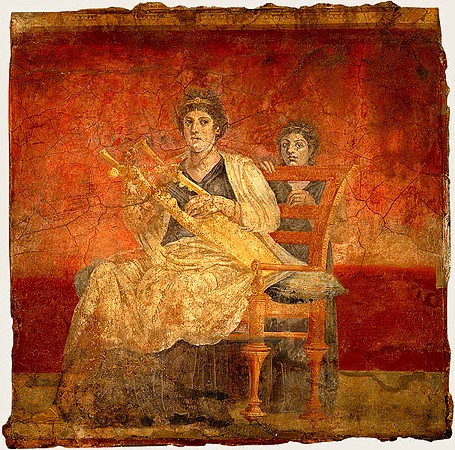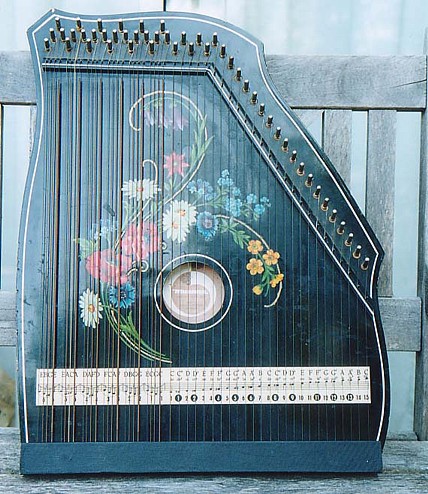Lessico
Cetra

Donna romana che suona la citara
In latino la cetra č cithara, che risale al greco kithára di etimologia sconosciuta, forse di origine orientale. Anche chitarra risale al greco kithára. La cetra č uno strumento musicale dell'antica Grecia, formato da una cassa armonica di legno, da cui partivano due bracci, curvati verso l'esterno e uniti in alto da una sbarra trasversale. Tra questa e la cassa venivano tese le corde, il cui numero variň da 4 a 7, fino a 11 e 15.
Fu uno
degli strumenti fondamentali del mondo classico, suonato a pizzico o con il
plettro. Lo strumento era inizialmente costruito come la lira![]() ma con
una cassa armonica di dimensioni maggiori. Con queste caratteristiche la cetra
ebbe una notevole diffusione sin dall'antica Grecia dov'era suonata da
citaredi professionisti. Il suo uso inoltre prese corpo anche a Roma.
ma con
una cassa armonica di dimensioni maggiori. Con queste caratteristiche la cetra
ebbe una notevole diffusione sin dall'antica Grecia dov'era suonata da
citaredi professionisti. Il suo uso inoltre prese corpo anche a Roma.
Nel corso dei secoli la sua struttura venne ulteriormente modificata, fino a intendere per cetra uno strumento dalla cassa di risonanza piatta le cui doppie corde metalliche venivano pizzicate, dotato di un lungo manico e dalla struttura paragonabile a quella di una pera. Questo modello di cetra venne utilizzato soprattutto dal XVI secolo fino al XVIII.
Concert zither with a fretted fingerboard
The zither or cither is a musical string instrument, most commonly in German-speaking Alpine Europe and East Asian cultures. The term "zither" is also used more broadly, to describe the entire family of stringed instruments in which the strings do not extend beyond the sounding box, including the hammered dulcimer, psaltery, Appalachian dulcimer, kantele, guzheng, kanun, autoharp, Persian, piano, santur, swarmandal, and others, see list of zithers.
The word "zither" is derived from the Greek word kithára, an instrument from classical times used in Ancient Greece and later throughout the Roman Empire and in the Arab world the word "guitar" derives from kithára as well.
The earliest known instrument of the zither family is a Chinese guqin found in the tomb of Marquis Yi of Zeng dating from 433 BC, featuring tuning pegs, a bridge and goose-like feet. In modern entertainment, the zither is perhaps most famous for its role in the soundtrack, especially in the opening scene, of the classic film noir The Third Man. The instrument has a prominent solo in one of Johann Strauss II's most famous waltzes, "Tales from the Vienna Woods". It is also used by multi-instrumentalist Laraaji on the third release of Brian Eno's ambient music series, Ambient 3: Day of Radiance. In more popular music, Australian-born singer Shirley Abicair popularised the zither when she used it widely as accompaniment in her popular TV shows, live performances and recordings in Britain in the 1950s and 1960s. More recently, Jerusalem-based multi-instrumentalist Bradley Fish has used zithers in a multitude of styles on the soundtracks of various Sony Digital Pictures films.
German zither - Like many other stringed instruments, acoustic and electric forms exist; in the acoustic version, the strings are stretched across the length of the soundbox, and neither version has a neck. They can be divided into two classes: fretted and fretless. A musician that plays the instrument is called zitherist or zither player.

A fretless Musima Guitar Zither with 45 strings (21 melody, 24 chord)
Violinske citre (Violin zither) - Violin zither in 1925 a German patent was issued to the Clemens Neuber Company for a bowed psaltery which also included a set of strings arranged in chords, so that one could play the melody on the bowed psaltery strings, and strum accompaniment with the other hand. These are usually called violin zithers.